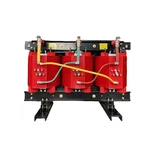The main differences between 33 kV (kilovolt) and 11 kV (kilovolt) electrical systems are:
- Voltage Level:
33 kV system operates at a higher voltage level compared to an 11 kV system. This means that the electrical potential difference in the 33 kV system is greater than in the 11 kV system.
- Transmission Distance:
33 kV systems are typically used for longer distance power transmission compared to 11 kV systems. The higher voltage in the 33 kV system allows for power to be transmitted over longer distances with less loss.
- Equipment Size and Cost:
Generally, equipment for a 33 kV system is larger and more expensive compared to an 11 kV system. This includes transformers, switchgear, and other components.
- Losses:
Due to the higher voltage in the 33 kV system, losses in terms of heat and energy during transmission are typically lower compared to an 11 kV system. This is important for efficient power transmission.
- Distribution Network:
11 kV systems are commonly used for distribution networks within cities and towns, where power is distributed to industrial, commercial, and residential areas. 33 kV systems are more commonly used for bulk power transmission between cities or regions.
- Safety and Insulation:
Higher voltage levels like 33 kV require more stringent safety measures and better insulation to prevent electrical hazards compared to 11 kV systems.










